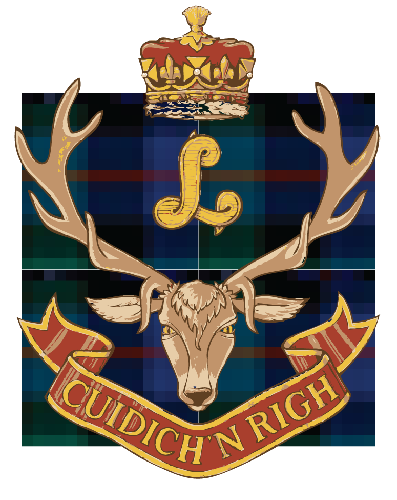Breaking the Hitler Line: May 23, 1944
The 70th anniversary of the Hitler Line took place in May
On the 20th of May 1944 The Seaforth Highlanders of Canada, as part of 2nd Brigade 1st Canadian Infantry Division, reached the outer fringes of the Hitler Line where in less than a week they would participate in one of the most intense battles of the Italian Campaign to date.
The Hitler Line had been under construction for many months. It ran across the Liri Valley and formed a belt of defensive installations immediately in front of the area which the Canadian Corps was to attack. The defences were well placed and deviously camouflaged, designed to funnel attacking troops into defined “kill zones’ for German artillery and crew served weapons. Every 150 to 200 yards along the line were bunkers which would hold about a platoon of men each. Strategically placed about the battlefield there were specially constructed pillboxes sticking a few feet above the ground with mounted machine guns and/or anti-tank guns. With the addition of skillfully deployed belts of barbed wire, mine-fields, anti-tank ditches, anti-personnel mines, etc., this would prove to be the most dangerous obstacle the Eighth Army had encountered snce they had landed in Sicily.

On the 23rd of May at 0600 hours the battle to break The Hitler Line would begin with a creeping barrage and at 0607 hours the Seaforths would start their advance supported by the tanks of the North Irish Horse. With the dust kicked up by the shelling and the smoke from the guns visibility by 0700 was cut down to only a few meters, the tanks were encountering heavy resistance from above and below, with artillery fire and mines taking out many before they had even reached the barbed wire. From the barbed wire to their objective the Seaforths would have to cross 400 yards of open ground with no communication due to the high rate of casualties to infantry personnel carrying wireless radios and under heavy fire. At this point the lack of visibility was proving to be a benefit although at one point the dust and smoke became so thick that Major J.F. McLean recalls he had to check his compass to make sure the company was going in the right direction.
Numerous acts of bravery were recorded in this hellish advance, with all four rifle companies deployed and none in reserve the fighting was determined and casualties amidst the numerous obstacles were quickly causing junior leaders to step into the breach when officers and section commanders fell. By mid-morning the only Company Commander to reach the immediate objective who was not a casualty was Major J.C. Allan. In total only 100 Seaforth N.C.Os and men of the four rifle companies deployed were able to reach the objective and throughout the afternoon these men, hastily organised into sections and platoons defended their objective through several German counter attacks. Later in the afternoon when Major Allan also became a casualty the NCO’s left continued to defend their positions and lead the remaining troops as they were slowly whittled away under the constant and direct assault by the Germans. By 1700 hrs it was noticed that the Germans had begun to withdraw, though artillery and rear guard actions were constant through to the late evening.
The Seaforth front was as thin as paper. They were the only battalion to reach their intermediate objective and hang on to it all day. Through fierce fighting the Seaforth had arrived at their objective first and were able to hold their position until reinforcement came. At the end of the day the Seaforths would stand the victors in the hardest won battle they had seen to date. The losses were heavy. Forty-nine other ranks and three officers were killed, seven officers and 99 other ranks were wounded and two officers and 50 other ranks were taken prisoner. The North Irish Horse, which now wear a maple leaf in memory of this battle with the 1st Canadian division, lost 41 tanks of which 25 were completely destroyed, this represented approximately half their strength.
With 210 casualties among the Seaforths it would be the most the battalion had ever suffered in one day throughout the war. The Commanding Officer, Lt-Col Thompson later wrote about the battle, stating “[success was gained] by the bravery and sheer guts of men in pride of regiment.”

